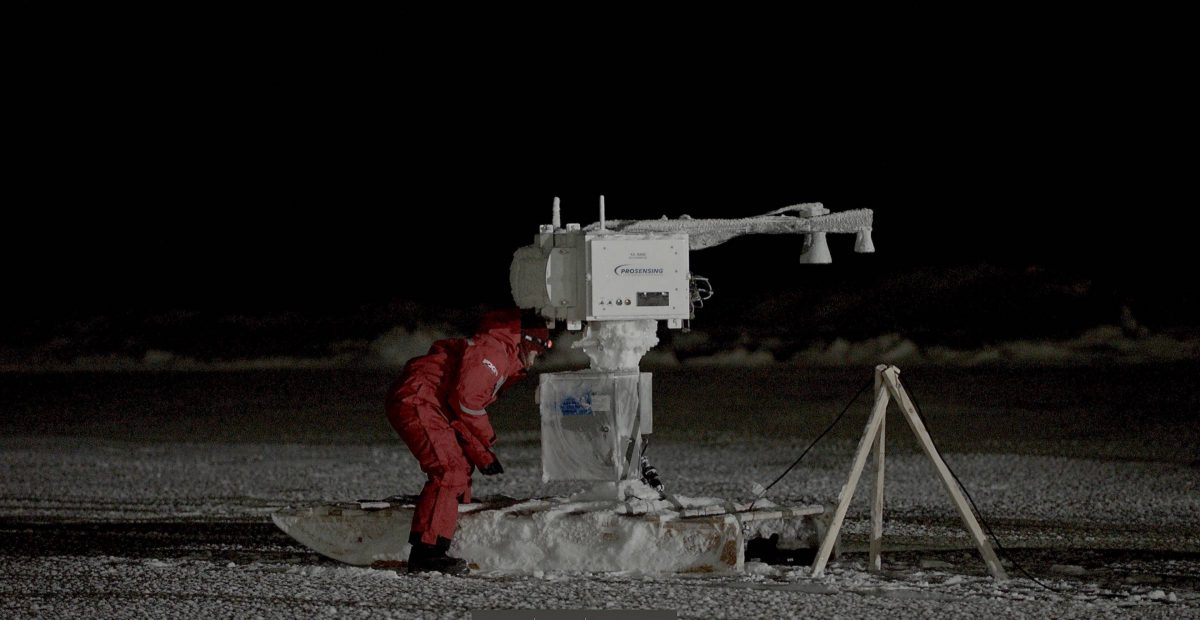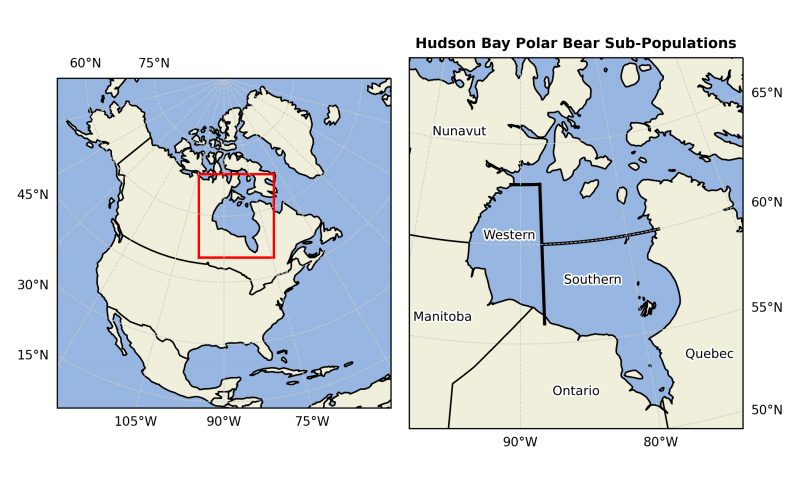
Photo: Lars Barthel
Scientists predict localized extinction of Hudson Bay polar bears if Paris Climate Agreements are breached
For the first time, a multi-disciplinary team of scientists, including UM's Julienne Stroeve and Alex Crawford, analyzed sea ice thickness against polar bear and seal survival across all of Hudson Bay; due to faster-than-expected sea ice loss, scientists predict localized polar bear extinction.
UM’s 150 Chair in Climate Forcing of Sea Ice, Julienne Stroeve, and assistant professor in Environment and Geography, Alex Crawford, joined a team of researchers to study the loss of sea ice and its impact on polar bears in Manitoba’s Hudson Bay. What they found may move up the timeline on when the bears may disappear in the area.
The report, “Ice-free period too long for Southern and Western Hudson Bay polar bear populations if global warming exceeds 1.6 to 2.6C” published June 13, 2024, in Communications Earth and Environment was developed in collaboration with researchers from the University of Toronto Scarborough, National Snow and Ice Data Center, The Arctic University of Norway, Fisheries and Oceans Canada, Environment and Climate Change Canada, and Polar Bears International.
As it is increasingly unlikely that the world will meet the most ambitious Paris Agreement target of limiting global warming to 1.5°C, the team of biologists and climate scientists came together, using the latest science, to reevaluate the future of Hudson Bay’s sea ice, polar bears, and seals. The report analyzes various climate warming scenarios if greenhouse gas emissions continue and we surpass 2°C warming above pre-industrial levels, the upper limit set in the Paris Agreement.
“If we fail to limit global warming to less than two degrees Celsius, we will lose Hudson Bay’s populations of polar bears,” says lead author Professor Julienne Stroeve, University of Manitoba, adding, “The disappearance of the Southern Hudson Bay polar bears is imminent, with Western Hudson Bay not far behind. Our research underscores the rapid changes human activity imparts to our climate. It’s incumbent upon us to understand the impending impact on our natural world, so that we can make policy decisions informed by science.”
A Comprehensive Approach for an Interconnected Ecosystem
This report offers the first holistic look at the future of Hudson Bay’s ecosystem—encompassing polar bears and seals alike—and predicts a polar bear extirpation, which means a localized extinction, between the 2030s and 2060s. Unlike previous reports analyzing partial regions, often looking retrospectively at historical data, this report provides a comprehensive examination of the future of the Hudson Bay area. This shift addresses changes in sea ice thickness and snow thickness, which are critical for polar bear hunting, polar bear denning, and seal pup denning.
This study analyzes sea ice thickness to determine polar bear survival, which has never been done before. Previous approaches assessed sea ice coverage, which authors found could overestimate polar bear survival by 50 days. Sea ice is not always thick enough for a polar bear to use for successful hunting, as seen in this video clip, therefore this report analyzes ice thickness of at least 10 cm – minimum for supporting a male polar bear hunting.
Key Results: Polar Bear Survival Depends on Melting Ice
Polar bear survival is directly related to Arctic sea ice, as they need the ice platform to hunt their main prey, seals. When polar bears are forced onto land by melting ice, terrestrial food is an insufficient replacement, with prior research finding that survival and reproduction are constrained by bears’ capacity to fast. This new report finds that under 2°C of warming, southern Hudson Bay will be ice-free for 174 to 182 days, which would impair reproduction and strain survival. Western Hudson Bay will maintain sea ice for longer, with 163 to 168 ice-free days. Analyzing the projections from 20 climate models, the Western Hudson Bay region becomes an unsuitable habitat at 2.2°C or 2.6°C. The southern Hudson Bay sub-population faces a more dire projection, with ice-free periods becoming excessively long for most bears at 1.6°C to 2.1°C. Therefore, if the Paris Agreement is breached, and the world surpasses 2°C of warming, this report finds that the southern population will disappear, and the whole of Hudson Bay’s polar bears will be at or near their survival limit. If we do surpass 2°C global warming, the timing of that breach and localized extinction depends on the rate of greenhouse emissions by human activities over the coming decades.
“Unregulated emissions could mean we see the disappearance of the Southern Hudson Bay subpopulation as early as the 2030s,” says assistant professor and co-author, Alex Crawford.
“Changing policies to achieve more aggressive emissions reductions could delay the breach of the 2°C threshold to the 2060s, maintaining the survival of Hudson Bay’s polar bears.”

This map illustrates the boundaries of the Western Hudson Bay and Southern Hudson Bay polar bear populations (Credit: Alex Crawford)
Significance of Hudson Bay’s Polar Bears
Hudson Bay is home to two of the world’s 19 polar bear subpopulations, representing the world’s southernmost polar bear populations, which have long been considered an indicator of how the rest of the world’s polar bear subpopulations will fare in the future. Hudson Bay’s polar bears are the best-studied polar bears in the world, and this report includes models using over 50 years of data since monitoring of Hudson Bay’s polar bears began in the 1970s. Beyond serving as a “canary in the coal mine” for other Arctic regions, these polar bears hold significant cultural value for communities around Hudson Bay.
“This report is more detailed and alarming than previous studies, reinforcing that Hudson Bay’s polar bears are not on a good trajectory unless significant emissions mitigation measures are implemented,” says co-author Geoff York, senior director of research and policy at Polar Bears International, adding, “This cross-disciplinary, forward-looking and comprehensive analysis of all of Hudson Bay provides more actionable insights for policymakers and wildlife managers.”
Implications for Seals and Other Species:
As rainfall, rather than snowfall, increases in the Subarctic and Arctic, it will be more difficult for both seals and polar bears to make dens to give birth to offspring, with rain potentially washing away their dens. There are three seal species in Hudson Bay, of which the ring seals are polar bears’ preferred prey. This report highlights how less snow can impact seal pup survival, as ring seals need at least 32 cm of snow depth to dig lairs for their pups. Future studies could look at the sea ice thickness needed for other species, like caribou and walrus that travel across the ice. Future research may analyze future sea ice roughness, which determines where snow sticks and accumulates, and therefore where seals can den.
This research underscores the importance of swift greenhouse gas emissions reduction, and multi-disciplinary, holistic approaches to research, management, and policy.






